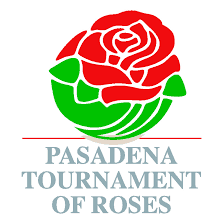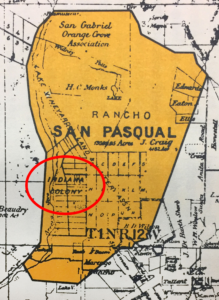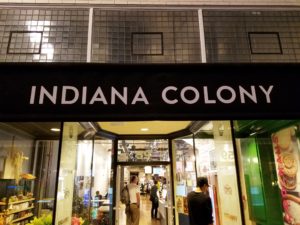The “Hoosier” Tournament of Roses? It almost happened.
The powerhouse economic impact of the Tournament of Roses is over $300 million. It’s carried by eight national networks and seen live in 174 countries. The football game is rightly called “the Granddaddy of Them All.”
Here’s a potential surprise. The high-impact 72-hour-party in Pasadena on New Year’s Day owes its origins to an unlikely source: a savage Midwest winter and some highly motivated Hoosiers from central Indiana.
 “Wait,” you might say, “what does America’s favorite New Year celebration have to do with people from Indianapolis?”
“Wait,” you might say, “what does America’s favorite New Year celebration have to do with people from Indianapolis?”
As it turns out, a lot. Can you say “the Hoosier Colony” (or alternatively, “the Indiana Colony”)?
There’s some serious marketing and public relations intuition behind this now-multi-million-dollar extravaganza. When my wife Jamie and I (both native Hoosiers) lived for 20-some years in what is today called Pasadena (more about that name later), we were occasionally curious about an old “Indiana-Pasadena Society” that used to meet locally. We also wondered why quite a bit of the older Pasadena architecture seemed to have Midwest-style pitched roofs (instead of the more common rock or tile coverings). In answer, we found an interesting history.
Here’s the story of a most unlikely “Tournament of Roses,” a legendary celebration that but for a handful of votes might well have been known as the Hoosier Tournament of Roses. It’s a story of perseverance, vision and some rock-solid Hoosier innovation.
The Indiana Colony takes form
Shortly after the end of the U.S. Civil War, back-to-back savage winters froze the Midwest into a near-arctic tundra. Hundreds of people died in cold and blizzards. At the same time, inflated stories of a wonderfully warm life in southern California, a state admitted to the Union a few decades earlier in 1850, were trickling back to the frigid Great Lakes region. In SoCal, basically a low desert, the temperatures were moderate while people in Chicago, Cleveland and Indianapolis were freezing to death.
So a group of motivated Indianapolis entrepreneurs, led by a then-prominent physician (Dr. T.B. Elliot) and his wife, started meeting in an office on Virginia Avenue in downtown Indy. They wanted no less than to create an all-new city somewhere in southern California where Hoosiers and Midwesterners could escape these devastating winters.

The venture, which was quickly over-subscribed by investors, began the foundation for what would eventually become the Hoosier Colony (also known as the “California Colony of Indiana” or simply, the Indiana Colony).
So what’s this have to do with the present Tournament of Roses?
After an arduous initial foray throughout the southern California region, which included the bankruptcy and resurrection of the venture, the outlying hills of the San Gabriel Mountains presented a deal that couldn’t be turned down. The physical Indiana Colony was thus born.
Many prominent Hoosiers, including Newton Claypool of the Indianapolis Claypool Hotel family, soon flocked to the new winter-proof paradise. Claypool himself built a massive mansion (only recently demolished) overlooking the San Gabriel Valley that was called one of the Indiana Colony’s “costliest and handsomest houses.”
But problems arose in paradise. The U.S. Post Office wouldn’t deliver the mail. It seemed that the Indiana Colony wasn’t a proper city with a post office.

So the Indianapolis founders got together to come up with a solution. Dr. Elliot had a university professor friend who was an expert on the Chippewa Indians of Wisconsin. He thought an Indian name that described the Indiana Colony’s beautiful valley setting would be appropriate. So the friend told Dr. Elliot that the Wisconsin Chippewa Indian word “Pasadena” could be translated “Crown of the Valley” or “Key to the Valley” (which, incidentally, is why Pasadena now calls itself the Crown City and incorporates both a crown and a key into its city seal).
The Little Old Lady from “Hoosier”?
The group got together and considered a number of possible city names, including both “Hoosier” and the Wisconsin “Pasadena.” You know the outcome. But for a handful of votes, one can only wonder what songwriter Don Altfeld might have written on that 1964 Spring day a tricked-out Ford “deuce” coupe barreled through while he drove on Pasadena’s Colorado Boulevard. Certainly a song called “The Little Old Lady from Hoosier” might have been a different radio hit for the Jan and Dean duo.
So Pasadena it was, which has absolutely no connection to the Spanish language. But as a result of the vote there would be no brightly coiffed announcers enthusiastically proclaiming: “Live from Hoosier, California, it’s the 128th running of the Hoosier Tournament of Roses.”
So back to the Tournament. Where did that come from and how were people from Indy involved?
In the latter 1800s, the devastating Long Depression hit. In the subsequent financial crisis, residential real estate prices plummeted in the Pasadena paradise.

So in December 1889, Charles Holden, a member of the Pasadena Valley Hunt Club (a group of equestrian enthusiasts who brought their loving of riding from Indiana and the Midwest) challenged the club: “In New York, people are buried in snow. Here our flowers are blooming…Let’s hold a festival to tell the world about our paradise.”
The festival would be held in the middle of the winter to best showcase the moderate climes of wonderful Pasadena, then a sparsely populated enclave of orange groves. The festival organizers decided to make the festival a full-blown public relations event, inviting editors from the Indianapolis Times, the Chicago Sun and other newspapers to be judges. The idea was that free publicity would flow in copious amounts as freezing Indiana and Midwestern locals could read of their newly minted California compatriots prancing about in gym shorts.
And if in the process they snared a few more real estate investors and Hoosier expatriates, so much the better.
The group organized several outdoor games as part of this initial festival, including bronco and pony races and a mock knight fight. But they needed a name.
Holder and his group had modeled this new event after Rome’s pre-Lenten “War of the Roses.” With flowers in abundance around Pasadena, the now-legendary name sprang forth almost effortlessly.
And thus was born the “Tournament of Roses.”
The first Tournament of Roses athletic events were held at an arena a few miles from a Pasadena trash dump that would be later sculpted into what is known today as the Rose Bowl in the Arroyo Seco valley. In keeping with the theme, many residents of the former Indiana Colony decided to bedeck their carriages with roses and flowers for the trip down Colorado Boulevard, setting the tradition that would become the legendary Rose Parade.
In 1902, the organizers added the fledgling “Tournament East-West football game” on New Year’s Day, launching a tradition of holiday football “bowl” games. If you ever wondered why the Big Ten always seemed to play a PAC Ten team in the Rose Bowl, now you know.
By the way, the first “Tournament of Roses” reaped a whopping profit of $229.05. The Valley Hunt Group decided to plow the proceeds back into making the tournament bigger and more successful.
Today the Pasadena Tournament of Roses generates more than a third of a billion dollars in economic impact. Nobody is trying to get people to move to Pasadena.
And while the name “Hoosier” didn’t quite make it into the marquee, that somehow that seems like the Hoosier way. Hoosiers are legendarily modest, even when they’re making marketing history.
By Michael Snyder, Managing Principal, MEK
7 thoughts on “The “Hoosier” Tournament of Roses? It almost happened.”
Comments are closed.

Nice job Mike, Happy New Year to you, Jamie, and Winston.
I have never heard the story. Great job Mike. I don’t think it make the Indiana history book either.
Many thanks, Darby – appreciate the kind comment!
This was a great history tour Mike. Thank you for the enjoyable read to start the year.
Pete Kissinger
Thank you, Pete – it is an unusual story of Indiana entrepreneurs – appreciate the kind comment.
Makes me love Pasadena (“Hoosier”) even more … Had never heard this history. Will need to share with my “Hoosier” husband and family.
Thanks, Eileen. There’s actually a restaurant cluster now in Old Town Pasadena that’s called “The Indiana Colony,” referencing the city’s Hoosier roots. Appreciate the comment!